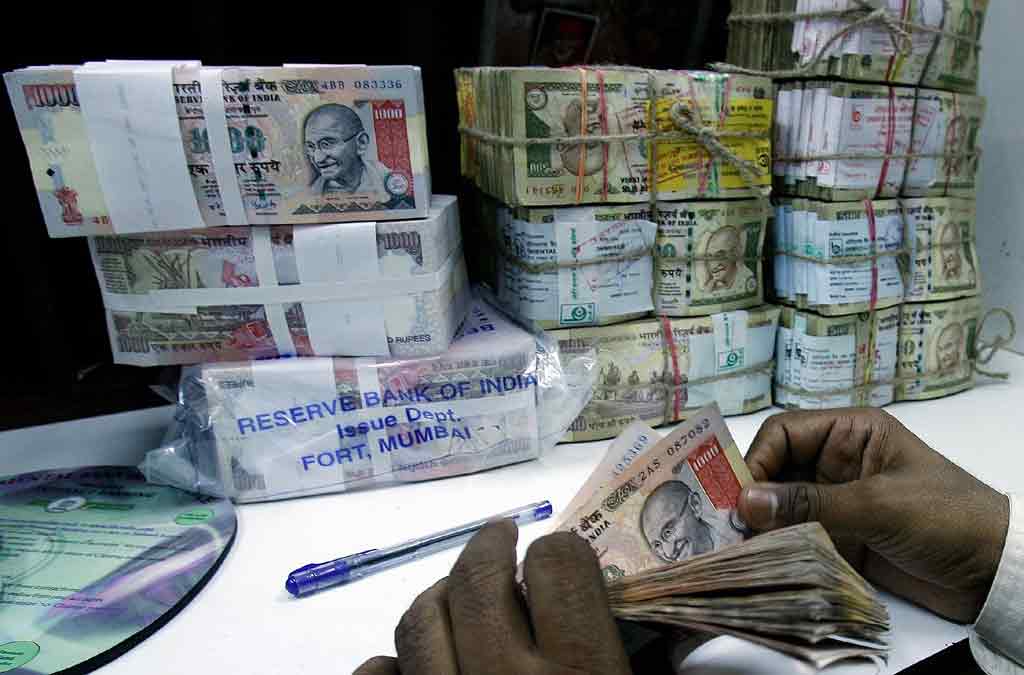 It is almost three years since the great macroeconomic experiment of "demonetization" had taken place in India. That so-called drive to rout black money has divided public opinion on its efficacy. On one end, the immediate aftermath of the November 8, 2016 decision to replace currency notes of 500 and 100 rupee variants was characterized by economic anxiety, even deaths, as cash vanished from markets. But over a longer stretch, the exercise didn't hurt Modi government, which has returned to power even stronger.
It is almost three years since the great macroeconomic experiment of "demonetization" had taken place in India. That so-called drive to rout black money has divided public opinion on its efficacy. On one end, the immediate aftermath of the November 8, 2016 decision to replace currency notes of 500 and 100 rupee variants was characterized by economic anxiety, even deaths, as cash vanished from markets. But over a longer stretch, the exercise didn't hurt Modi government, which has returned to power even stronger.

As the years go by, scholars have started coming up with empirical evidence on how the move affected the Indian economy in the short term. A recent study by eminent Harvard professors and macroeconomists, tiled "Cash and the Economy: Evidence from India's Demonetization," provides some useful insights. Those in Pakistan who have been advocating for or against a similar experiment in the homeland ought to study the report. Or at least read this piece.

The study, which is authored by Gabriel Chodorow-Reich, Gita Gopinath, Prachi Mishra, and Abhinav Narayanan, reaffirms the notion that "objectives" matter when it comes to currency demonetization. The Modi government had publicly sold the overnight currency shock as a revolutionary step that would wipe out black money. However, as most of the old currency came back into the new system within a few months, the illicit stash seemed to have remained intact.
But there were other consequences, some unintended, that throw up food for thought for other developing countries. The study suggests that short-term pain is an inevitable consequence of such a shock. As the study shows, it started with cash shortages, as captured by the study in a significant decline in ATM transactions in areas where the shock was more pronounced than the rest.
As households went off their "money demand curve" due to cash shortages, economic output plummeted immediately, in some areas more so than the rest. The study estimated that the currency scarcity, amid inability of India's printing presses to keep up with the currency demand, reduced economic activity (measured through employment data and "nightlights") by 3 percentage points in November and December 2016. The declining output resulted in lower growth in bank credit.
The rather positive effects of the demonetization episode were concentrated in deposits and alternative payments. There was higher growth in bank deposits, albeit "short-lived", as people started exchanging old money for new, putting more money into banks, amid daily and weekly limits on cash withdrawals. Moreover, regions that experienced greater currency shock than the rest exhibited a faster adoption of alternative payment forms like electronic wallets and point-of-sale (POS) machines.
"The scale of the changes in these variables - a 50 percent decline in ATM withdrawals, a doubling of e-wallet transactions, and a sextupling of POS transactions between October and December 2016 - seem difficult to attribute to any economic shock other than demonetization," the authors noted.
The authors are careful to note that the study analyzed only short-term consequences and that a long-term analysis on the demonetization's impact on GDP growth would need more data. Also, analysis based on official data has its limits; because 81 percent of India's total employment and 44 percent of its total output are attributed to the informal sector, which is the most dependent on cash.
The biggest lesson from the Indian episode, as recent studies have highlighted, is that policymakers may not be able to control "legacy" black money, but a targeted demonetization may help lay a foundation to curb growth in black money. However, achieving demonetization through a sudden, surprising shock will also end up causing short-term economic pain to the communities extremely reliant on cash.
In a highly informal economy, there are both costs and benefits of administering a currency shock. Short-term output will go down but it may lead to abnormal growth in bank deposits and digital payments. The next piece on this subject will attempt to answer if demonetization can be used in a targeted, fool-proof way to formalize Pakistan's cash-based economic system without causing too much disruption.




























Comments
Comments are closed.